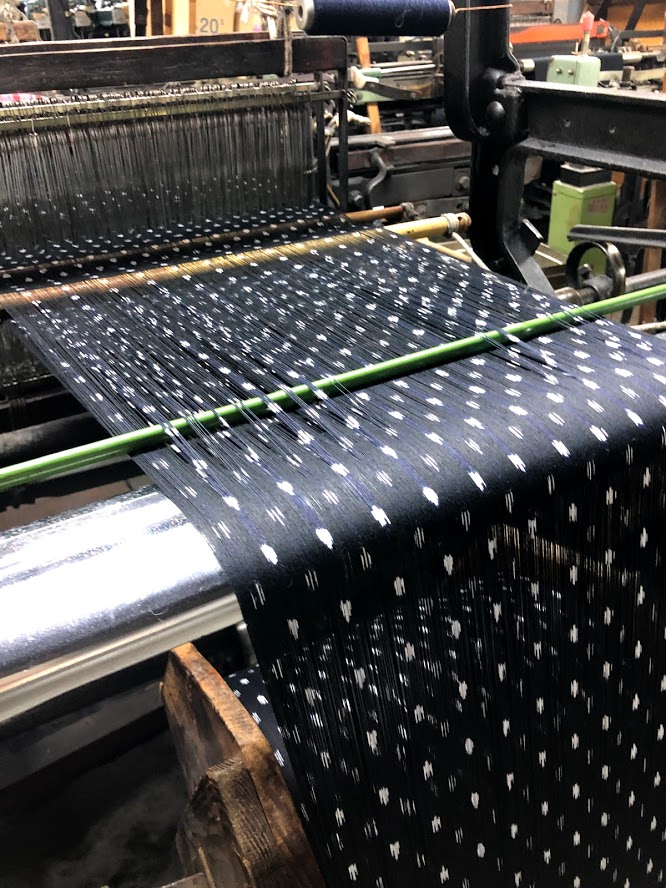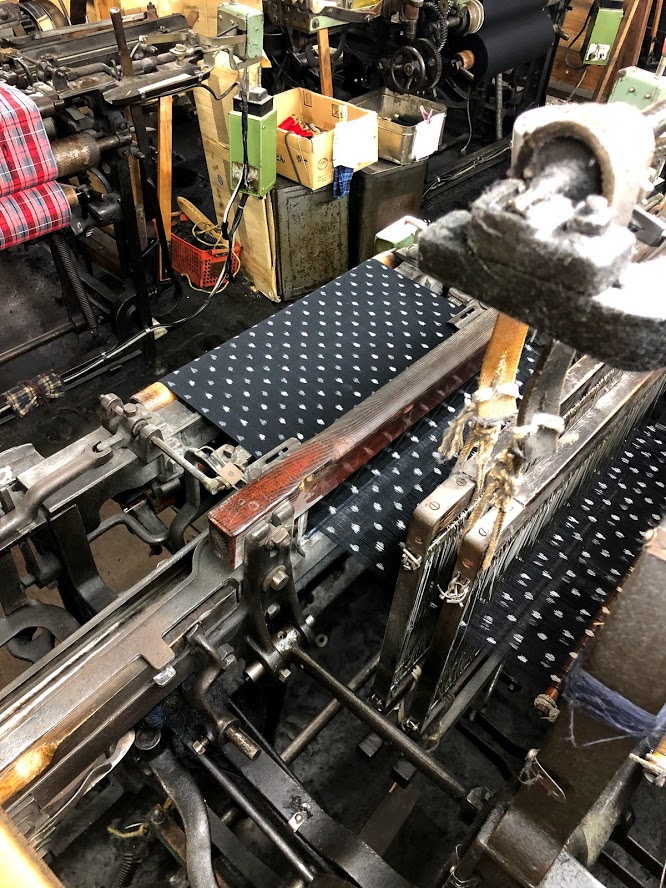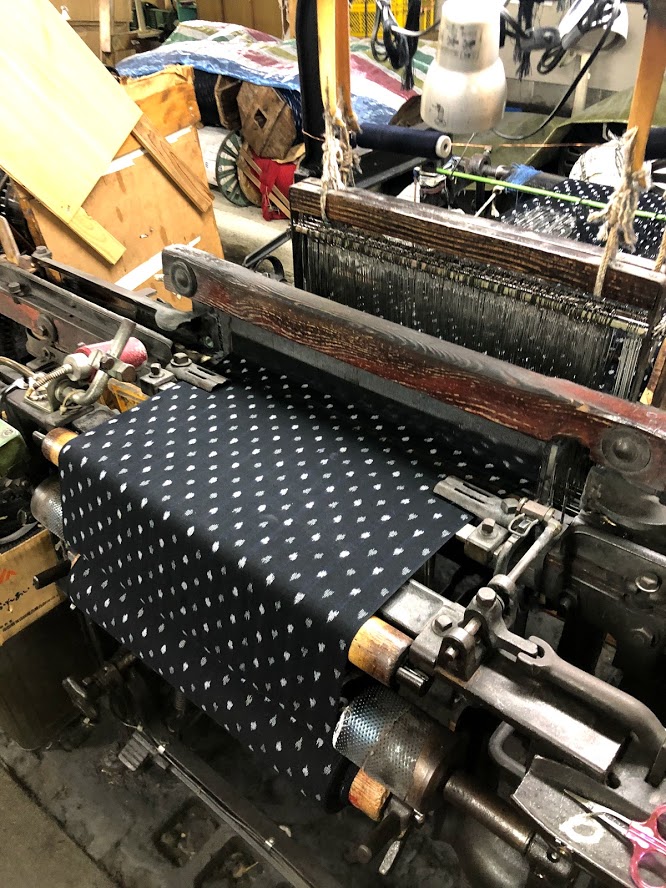
<Origin of polka dot pattern>
The polka dot pattern is one of the basic patterns that have been woven by various woven fabrics. The origin of Shimogawa Orimono’s polka dot pattern is “indigo dyed handwoven”. The idea was to reproduce the polka dot pattern of the time by mass-producing it with the “Tate Kasuri” technique using a power loom, referring to the few remaining materials and the designs of the time.

When making a polka dot pattern, make a polka dot pattern by combining Kukuri patterns with slightly different lengths. If you want to make finer and finer polka dots, you can also think of making polka dots by combining 4 to 6 patterns.
Optimization 1.
Consider the size of the handle. When making polka dots of the size shown in the picture, is it necessary to make polka dots with 6 different Kukuri lengths? We will examine how many changes are appropriate from the viewpoint of productivity and efficiency. In the case of this pattern, I made a polka dot pattern by combining three stages of Kukuri patterns.

Optimization 2.
Find the minimum warping loss. Various polka dots such as “round polka dots” and “vertically long polka dots” can be envisioned for making polka dot patterns with three types of Kukuri patterns. We will make the shape of the polka dot including whether the required number of warp threads made from the three types of Kukuri are the same or change. With this pattern, the warp loss is zero and the yarn amount of 36 rolls (432m) can be secured by one Kukuri work.

Consideration
To tell the truth, I tried many times until I got to this pattern, and made various polka dot patterns. Including fine adjustment, 5 patterns of Kukuri trial and 10 patterns of Kukuri are combined to build a pattern. Ultimately, we reached the ratio of the size and quantity of the handle, which is the most productive and does not cause warping loss. Only the finished pattern will be established as a standard item.
Shimogawa-Orimono
E-MAIL info@oriyasan.com
URL oriyasan.com
instagram http://instagram.com/shimogawakyozo/
facebook https://www.facebook.com/shimogawaorimono
Twitter @kasuritter
Tumblr kyozoshimogawa
YouTube https://www.youtube.com/channel/UCOZennIqkscFGNJLwnTOyKg